Confined Space: A Guide to Industrial Work in Enclosed Areas
A confined space is an area within a structure or system where workers perform tasks. However, not all enclosed spaces qualify as confined spaces. For example, the interior of an airplane hangar would not be considered a confined space because it doesn't meet specific criteria.
To be classified as a confined space, the following three conditions must be met:
- The space is large enough for a person to enter and work inside.
- The space has limited access points for entry and exit.
- The space is not intended for continuous human occupancy.
For instance, when an inspector enters a large boiler or storage tank for inspection, they are working in a confined space. In contrast, an airplane hangar does not qualify due to its easy access and lack of restricted entry/exit points.
Confined spaces can be found both underground and above ground, and they are common in various industrial settings. Other terms used to describe these areas include "confined area," "enclosed space," or simply "confined room."
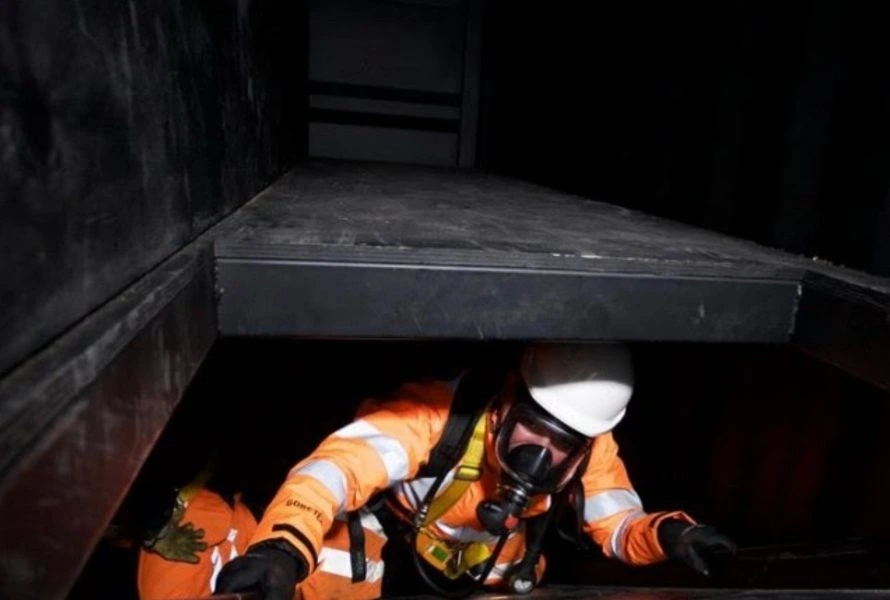
Despite being enclosed, confined spaces can be quite large. For example, a flue gas desulfurization (FGD) unit used in coal-fired power plants can be up to 80 feet tall. Similarly, industrial boilers and storage tanks often create vast, cavernous environments that are classified as confined spaces.
This guide explores how work is conducted in confined areas, the risks involved, the tools used, and the regulatory considerations necessary for such operations.
How to Identify a Confined Space?
Most confined spaces are straightforward to recognize because they meet the three criteria: they are spacious enough for a person to enter, not designed for continuous use, and have limited access points.
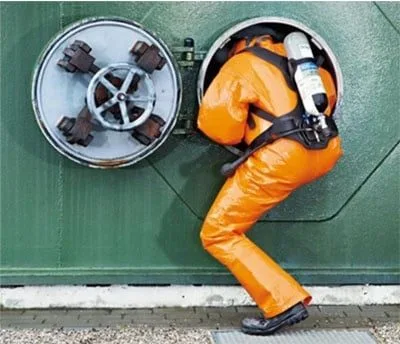
However, some examples may require more thought. A ditch, for instance, could be considered a confined space if access is difficult. Another example is the inside of an airplane’s wing, which may need periodic inspections and thus involve confined space work.
One factor that helps identify a confined space is considering the safety implications of working in it. These spaces often contain hazardous conditions, like toxic gases or dangerous materials, even if they are not strictly required for classification.
For example, grain bins can be extremely dangerous if someone falls into them and drowns. Large sewer pipes also pose risks due to potential biological or chemical hazards.
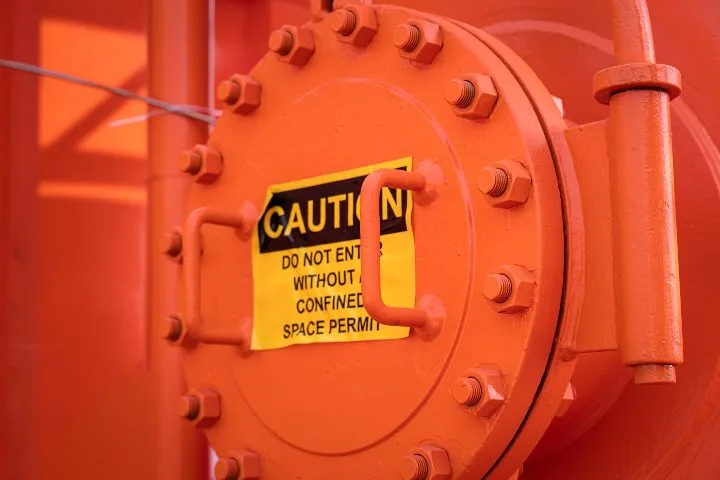
Industries Where Confined Space Work Occurs
Here are the main industries where people regularly work in confined spaces:
Oil & Gas
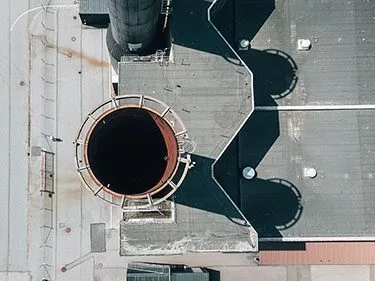
- Chimneys and smokestacks
- Offshore rigs
- FPSOs
- Drilling ships
- Jetties
- Storage tanks
- Refineries
Chemical
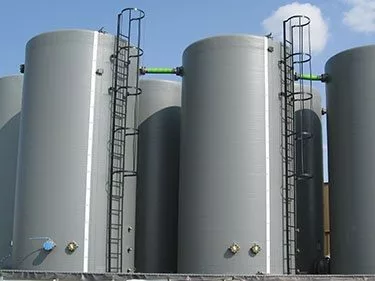
- Fermenter tanks
- Pressure vessels and storage tanks
- Fiberglass storage tanks
- Heat exchangers
- Storage silos and bins
Mining
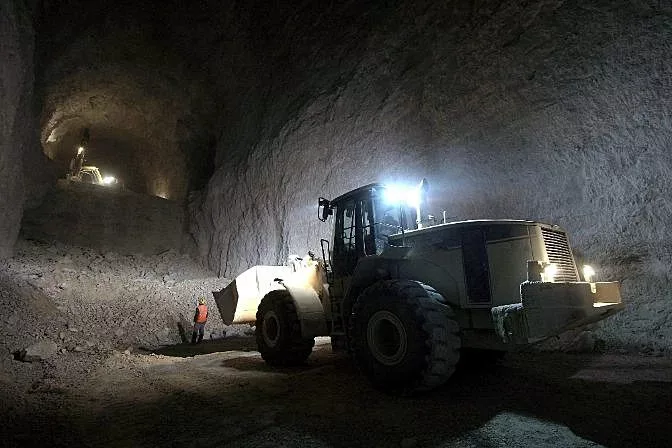
- Stopes
- Ore passes
- Crushers
- Other areas as needed, including in equipment used to support mining operations
Power Generation
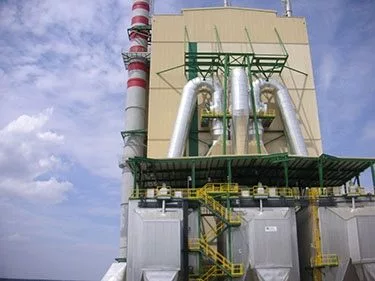
- Coal fired boilers
- Recovery boilers
- Heat recovery steam generators
- Wind turbines
- Nuclear power plants
- Hydro power plants
- Chimneys and stacks
Wastewater Infrastructure
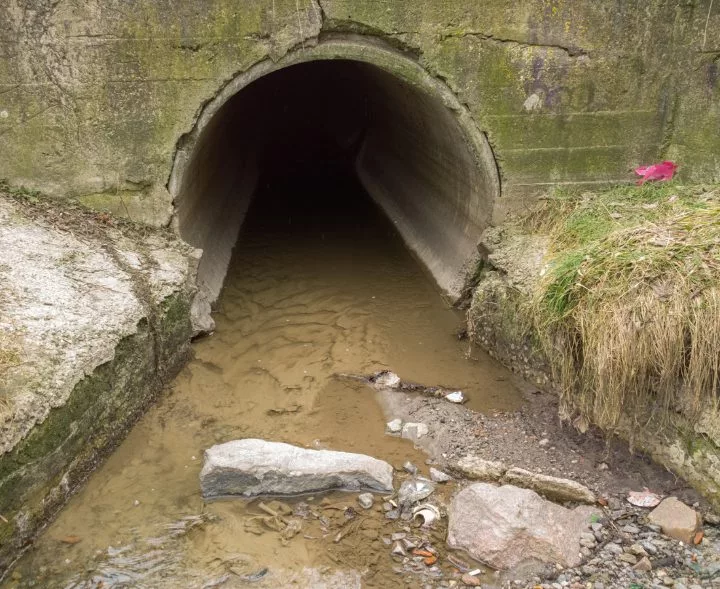
- Pipes
- Water outfalls
- Storm drains
- Manholes
- Culverts
- Ditches, wells, and trenches may also be considered confined spaces when access or egress is limited (but they still have “blue sky†above)
Maritime (includes shipping yards and marine vessels)
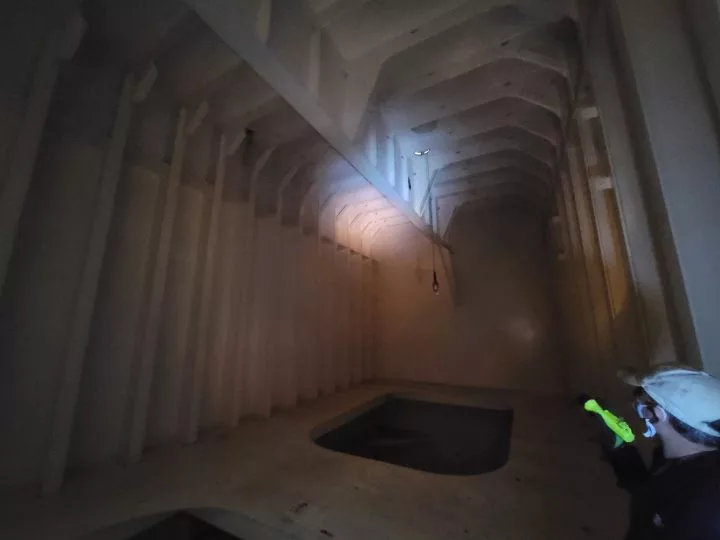
- Ballast tanks
- Barges
- Shipping containers
- Fish holds
Construction (includes residential and commercial properties)
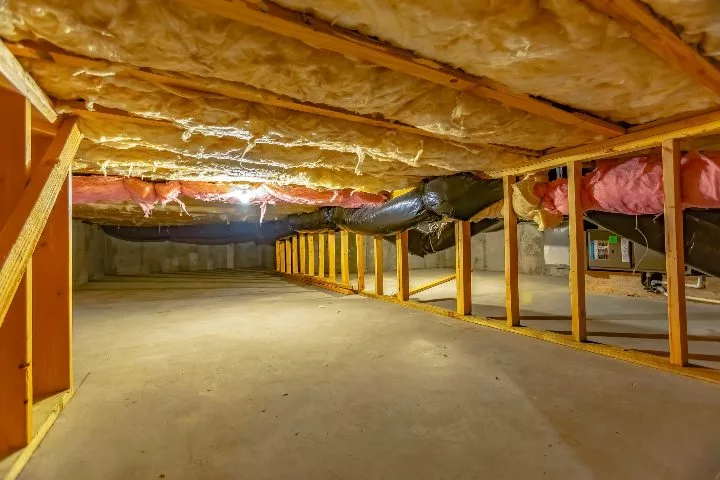
- Crawl spaces
- Vaults
- Sub Cellars
- Cold storage
- Tunnels
Other examples of confined spaces include:
- Bins
- Silos
- Vats
- Hoppers
- Water supply towers
- Aircraft wings
- Manure pits
Confined Space Entry—Common Types of Work Performed
There are two main types of work typically performed in confined spaces:
- Inspections
- Repairs
Inspections and repairs are key parts of maintenance processes. Inspectors identify potential issues, and this information is used to decide whether to repair, replace, or monitor the issue over time.
For example, ballast tanks on ships are used to maintain balance by pumping seawater in and out. Due to corrosion from saltwater, regular inspections are necessary. Inspectors empty the tanks and enter them to check for signs of wear.
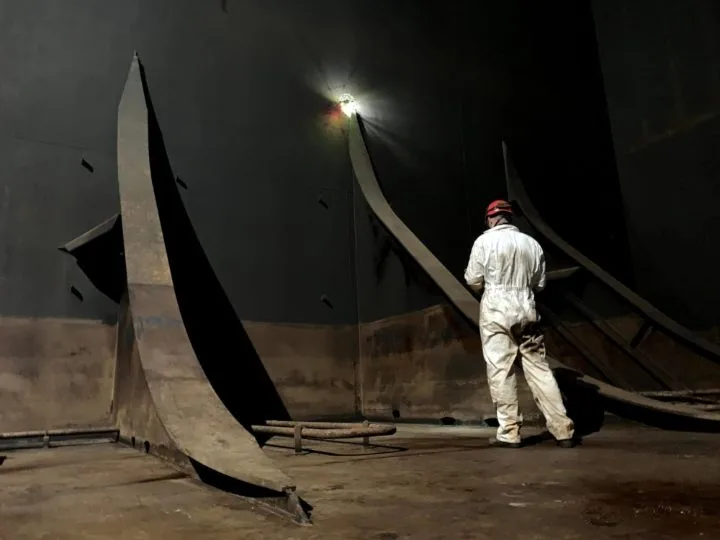 An inspector flies a drone inside a storage tank on an oil tanker
An inspector flies a drone inside a storage tank on an oil tanker
Spotting corrosion doesn’t always mean immediate repair. Sometimes, the maintenance plan involves monitoring the issue to ensure it doesn’t worsen or compromise the tank’s integrity.
These inspections are crucial for maintaining the longevity of industrial assets. In industries involving explosive materials, such as Oil & Gas, inspections are also vital for safety, helping prevent accidents caused by poorly maintained equipment.
When working in confined spaces, inspectors have a range of techniques at their disposal, known as Non-Destructive Testing (NDT), which allows them to inspect materials without damaging them.
Common NDT methods used in confined spaces include:
- Visual NDT (VT)
- Acoustic Emission NDT (AE)
- Eddy Current NDT (ET)
- Leak Testing NDT (LT)
- Dye Penetrant NDT (PT)
- Magnetic Particle NDT (MT)
- Radiography NDT (RT)
- Ultrasonic NDT (UT)
The Dangers of Working in Confined Spaces
Work in confined areas can be extremely hazardous. According to the U.S. Bureau of Labor Statistics, from 2011 to 2018, 1,030 people died in the U.S. alone due to occupational injuries related to confined spaces or rooms.
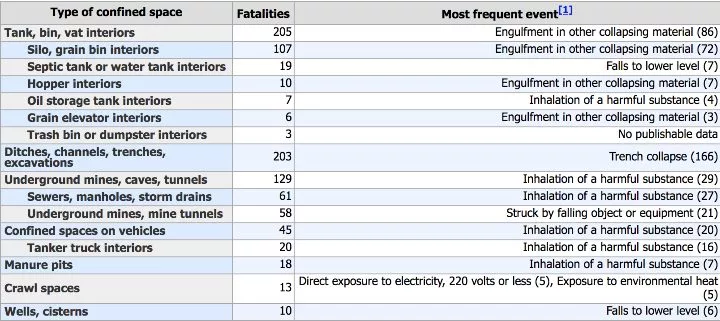
Several factors contribute to the danger of these spaces:
- Atmosphere—the space could be oxygen-deficient or enriched, or contain asphyxiants or noxious gases.
- Chemical and biological exposure—the space might contain harmful chemicals or bacteria.
- Fire hazards—flammable liquids, gases, or dust can lead to explosions.
- Engulfment risk—workers could be surrounded by liquid or flowing solids like grain.
- Mechanical and physical hazards—noise, temperature extremes, radiation, electrical dangers, structural risks, falling debris, or slips and falls.
Additional dangers include rescue efforts, where 60% of fatalities in confined spaces occur among those attempting to save others, and working at heights, which adds another layer of risk.
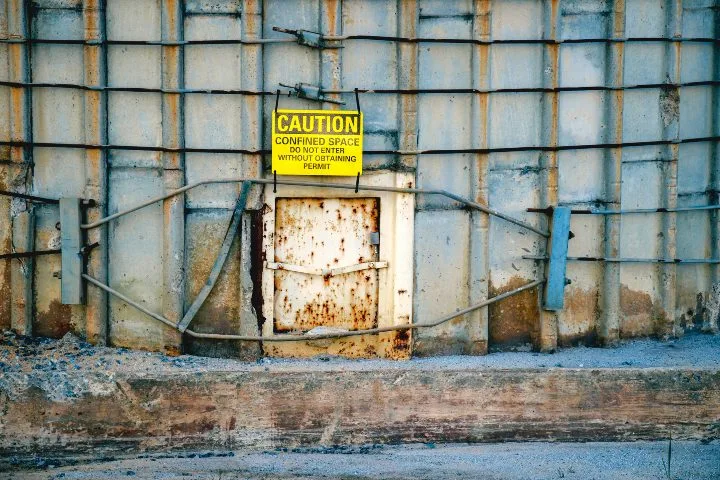
Procedure for Entering a Confined Space—Planning Ahead to Reduce Risk
After obtaining proper training and permits, the following steps are typically recommended for planning a safe operation in a confined space:
1. Conduct an initial survey of the space and work
In this survey, workers should:
- Identify potential hazards in the space.
- Complete a risk assessment documenting the likelihood, severity, and consequences of each hazard.
- Document the number of employees who will work in the space.
- Record any changes or activities that might occur in the space.
2. Create and implement a plan
After the survey, workers should prepare the area by:
- Setting up signage and barricades to indicate ongoing confined space work and secure entry/exit points.
- Planning for rescues and emergencies, ensuring a clear plan for each identified hazard.
- Clarifying the role of the standby person, outlining their responsibilities in case of an emergency.
3. Mitigate identified hazards
Steps to mitigate hazards may include:
- Isolating the hazards.
- Cleaning, purging, and ventilating the space.
- Testing and monitoring the atmosphere.
For operations requiring frequent confined space entries, a comprehensive hazard assessment and control program should be established.
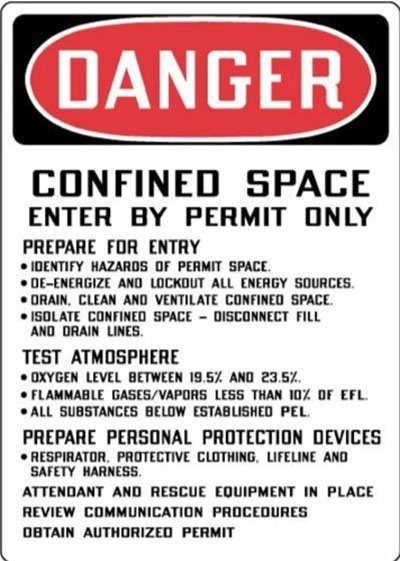
Confined Space Equipment
While recent designs aim to reduce the need for entering confined spaces, in most cases, it's still unavoidable.
Personal Protective Equipment (PPE) for Confined Space Work
The type of PPE required depends on the specific confined space where work is planned. Common PPE includes:
- Hard hats
- Gloves
- Eye and face protection
- Foot protection
- Flame-resistant clothing (for explosive environments)
- Chemical gloves (when handling chemicals)
- Fall protection harnesses (when working at heights)
Equipment for Human Entry in Confined Spaces
In addition to PPE, here are common tools used to assist workers in accessing and working inside confined spaces.
Confined space entry systems
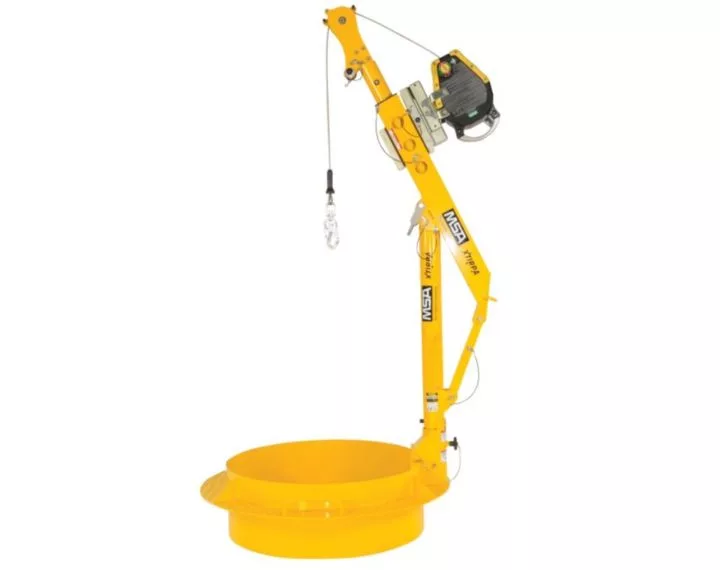
These systems help with horizontal or vertical access to difficult-to-reach areas, such as pressure vessels or manholes.
Hoists

Hoists are used for lifting, lowering, and positioning personnel and materials within confined space applications.
Retractable devices
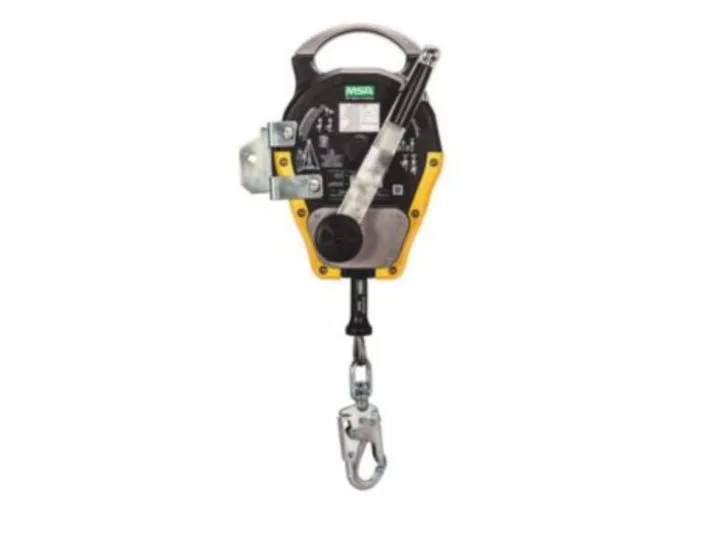
These devices provide fall protection, allowing for bi-directional retrieval in confined spaces.
Equipment for Remote Data Collection in Confined Space Work
Increasingly, inspectors are using robotics to minimize human entry into confined spaces. These robots are primarily used for data collection during inspections, though future advancements may allow them to perform repairs as well.
Some commonly used remote data collection equipment includes:
Camera-on-a-Stick
A camera-on-a-stick is a simple device that lowers a camera into a confined space. It's cost-effective and efficient for collecting images without requiring human entry.
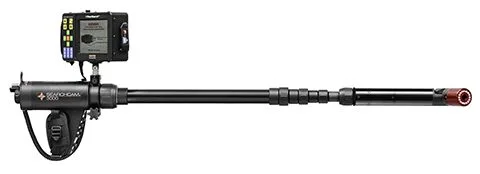 Searchcam's Camera-on-a-stick
Searchcam's Camera-on-a-stick
However, these devices have limitations in access, as they can only collect imagery visible from the access point.
Crawler robots
Crawler robots are ideal for inspecting long, uniform spaces like pipes and ducts. They are usually tethered for power and data transmission, allowing for extended inspections deep within the space.
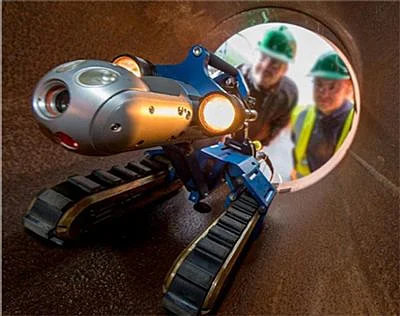 Pipe inspection crawler from Inuktun
Pipe inspection crawler from Inuktun
Snake robots can navigate through manholes and access virtually any location close to the entry point. Their main drawbacks are their weight and size.
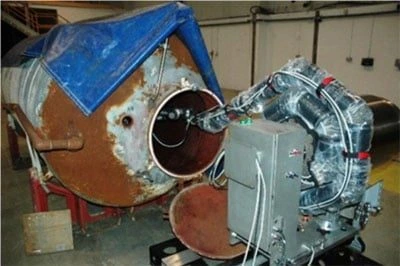 Snake robot from the Petrobot research project
Snake robot from the Petrobot research project
Climber robots use magnets to move along vertical surfaces, making them suitable for metallic confined spaces. Most models are heavy and expensive, though miniature versions are emerging.
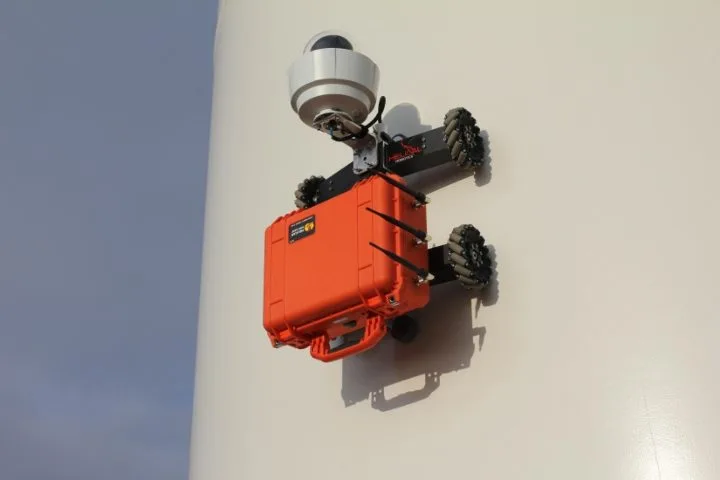 The HR-MP20 Light Weight Magnetic Climbing Robot from Helical Robotics
The HR-MP20 Light Weight Magnetic Climbing Robot from Helical Robotics
For more details on confined space equipment, visit our complete guide here.
Confined Space Inspection Drone
Drones are also being used for inspection work in confined spaces. However, not just any drone is suitable for this task. Specialized confined space inspection drones, like Flyability’s Elios 3, are designed for such environments.
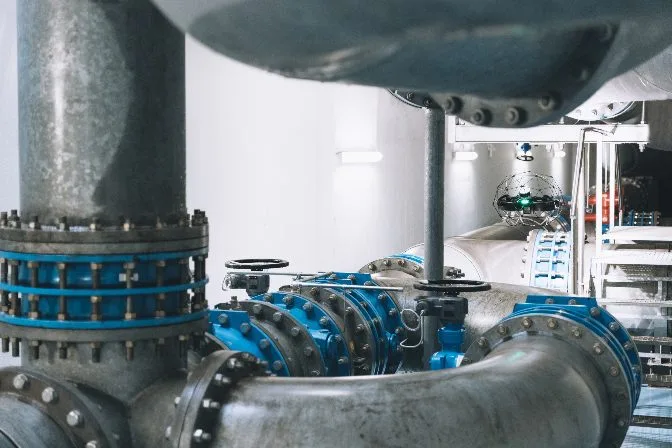 The Elios 3, Flyability's confined space inspection drone
The Elios 3, Flyability's confined space inspection drone
Unlike ground-based robots, indoor drones offer greater versatility. Their three-dimensional mobility allows access to almost any location, regardless of the environment’s shape or material.
However, flying indoors presents several challenges, such as turbulence, dust, signal interference, darkness, and reflective surfaces that can affect image quality. Additionally, the confined nature of the space increases the risk of collisions.
The Elios 3 was specifically designed to overcome these challenges. It features a protective cage and collision-tolerance technology, enabling safe flights in tight spaces. If it bumps into a surface, it continues flying without damage.
It also includes advanced lighting and stability features, allowing high-quality imaging even in dusty or dark environments.
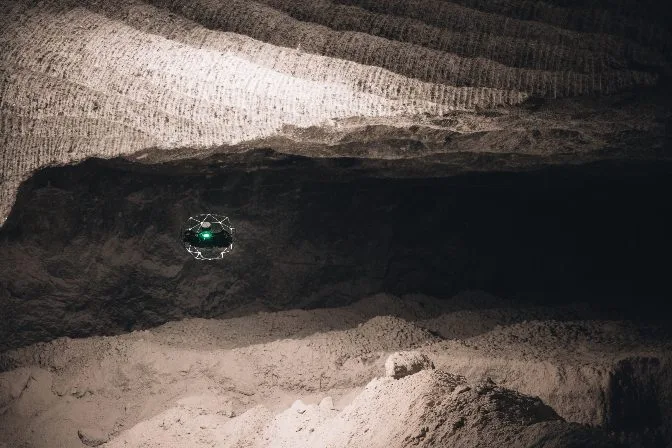 The Elios 3 flying inside a mine
The Elios 3 flying inside a mine
[Case study: Elios 3's 3D Mapping Helps City of Lausanne with Water Department Inspections.]
Confined Space Training and Permit Requirements
Given the inherent dangers of confined spaces, most countries have strict standards, including training and permit requirements, for working in them.
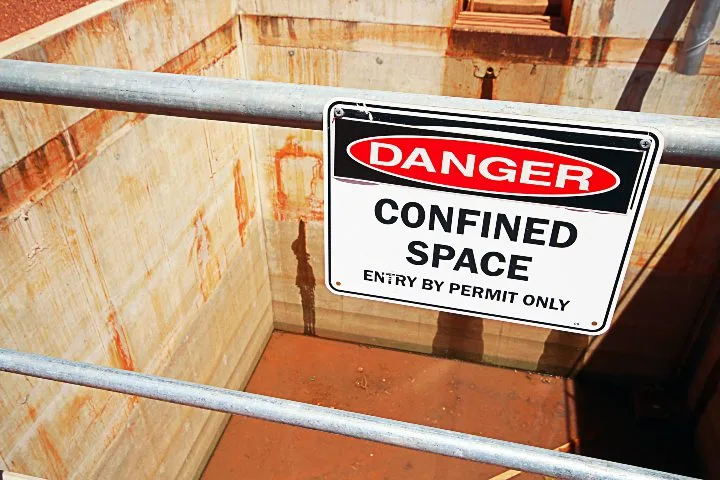
Some standards are general and apply across industries, while others are industry-specific. These guidelines help ensure the correct design, safeguarding, and maintenance of equipment in confined spaces.
Confined Space Training
Due to the dangers and complexities of confined space entry, special training is usually required to be certified for this kind of work. This training helps maximize safety by identifying hazards and establishing strong planning protocols.
Training typically covers skills such as:
- Testing air quality for safety in the space
- Locking and tagging out connecting piping
- Forcing ventilation
- Observing workers in the space to make safety decisions
- Developing a rescue plan before entry
In the U.S., OSHA requires anyone planning to enter or work around a confined space to be certified under the OSHA Confined Spaces standard 29 CFR 1910.146. To achieve certification, workers must score 80% or higher on a written exam covering topics such as:
- Identifying what constitutes a "confined space"
- Understanding the application and scope of OSHA’s confined space standards
- Knowing OSHA’s requirements for safely developing and running a PRCS entry program
- Recognizing when to use alternate entry procedures
- Understanding the roles of entrants, attendants, supervisors, and contractors
- Knowing the requirements for emergency services and rescue
- Having basic knowledge of equipment use and limitations
Confined Space Permits
Most confined spaces require workers to obtain a permit before entering. In the U.S., determining whether a permit is needed relies on whether the space is a Permit-Required Confined Space (PRCS).
OSHA defines a PRCS as one that:
- Contains or has the potential to contain a hazardous atmosphere
- Contains a material that could engulf an entrant
- Has an internal configuration that could trap or asphyxiate an entrant
- Contains other serious safety or health hazards
Once a permit is obtained, workers must assess hazards, develop an entry plan, and create a rescue plan.
For a full understanding of confined space entry procedures, refer to this PRCS Decision Flow Chart from OSHA:
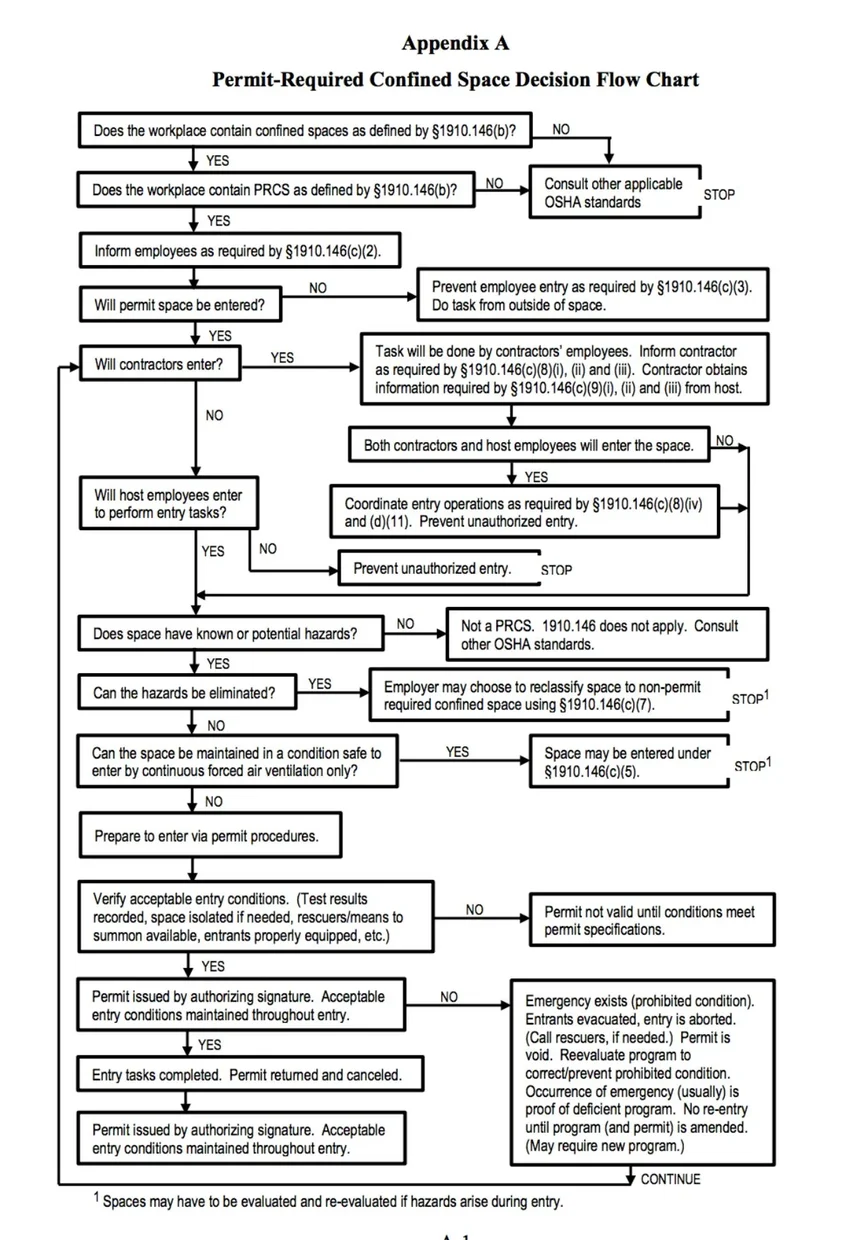
Non-Permit-Required Confined Spaces
Some confined spaces meet the definition but do not require permits. Examples include:
- Equipment closets
- Crawl spaces under houses
- Machinery cabinets
- Ventilated tunnels
- Drop ceilings
Confined Space Work Standards and Codes
OSHA
- Confined Spaces
- Appendix A: Permit-required Confined Space Decision Flow Chart
- Appendix B: Procedures for Atmospheric Testing
- Appendix C: Examples of Permit-required Confined Space Programs
- Appendix D: Confined Space Pre-Entry Checklist
- Appendix E: Sewer System Entry
- Appendix F (Non-Mandatory): Rescue Team or Rescue Service Evaluation Criteria
NIOSH (National Institute for Occupational Safety and Health)
- NIOSH information on Confined Spaces
- NIOSH Preventing Entrapment and Suffocation Caused by the Unstable Surfaces of Stored Grain and Other Materials
- NIOSH Preventing Occupational Fatalities in Confined Spaces
- NIOSH Guide to Safety in Confined Space
ASSP (American Society of Safety Professionals)
- ASSP Confined Spaces Standard ANSI/ASSP Z117.1
Steel Cylinder Caps & Valve Guards
All cylinders with a threaded necking are required to have cylinder caps in place when being stored full or empty. Compatible With Select cylinders, Product Type Cylinder cap. These caps have the durability to withstand cylinder falls and keep the valve protected Cylinder valve protection is paramount when moving or storing a cylinder.
Stamped Welded Cylinder Guards,Gas Cylinders Guards,Cylinders Guards,Lpg Cylinders Guards
Hangzhou Qizheng Trading Co., Ltd. , https://www.gascylindercap.com